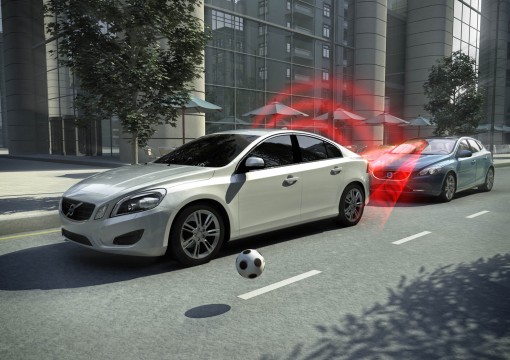Volvo steps up safety mission for 2020 target

BELEIVE it or not, it is 30 years since it became compulsory to wear seatbelts in the UK – and the brand that developed the first three-point harness, Volvo, is stepping up its safety mission.
The Swedish company actually developed the first seatbelts as long as 50 years ago and the aim of its Vision 2020 initiative is that nobody will be killed or seriously injured in or by a new Volvo by that year.
To mark the anniversary, Volvo commissioned a survey into the British public’s views on vehicle safety which revealed that despite major steps in road safety technology, some 60 per cent don’t believe safety innovations can wipe out road traffic accidents in the near future.
The seatbelt law came into force on January 31, 1983, and it has been estimated this legislation has saved more than 60,000 lives over that period.
The poll of 1,184 drivers also found that many would welcome a range of safety innovations on vehicles, a quarter saying they would like a car that drives itself and half being happy to be driven by autopilot.
Some 45 per cent would like to see pedestrian protection technology on all cars, half want all round cameras fitted to vehicles but only a third of drivers believe speed limits on motorways should be increased because of these improved safety features.
Volvo continues its approach to passive and active safety technology, being the first manufacturer to introduce its auto-braking City Safety system as standard across all cars in the V40 range.
City Safety, a low-speed collision avoidance system, operates at speeds up to 31mph and the V40 keeps an eye on traffic in front and automatically brakes if the driver fails to react in time when the vehicle in front slows down or stops – or if the car is approaching a stationary vehicle too fast.
Features like pedestrian detection where cars automatically brake when sensing pedestrians ahead, the world’s first pedestrian airbag and even autopilot convoy driving, where cars link together to drive themselves in special motorway road trains, are already being used or tested by Volvo and the manufacturer hopes to start rolling out this technology in the next few years.
Volvo Car UK managing director Nick Connor said: “Volvo has a fantastic safety heritage at the forefront of innovative technology having clocked up several world firsts including the debut of the pedestrian airbag on the all-new V40 launched last year.
“As a nation of sceptics, it is perhaps not surprising the majority of British motorists think the introduction of vehicles which make accidents virtually a thing of the past is not possible, but I have every faith in Volvo to prove them wrong.”
Volvo first introduced the two point cross-chest belt as an accessory in 1956 followed by the three-point belt in the front as standard equipment in 1959.
